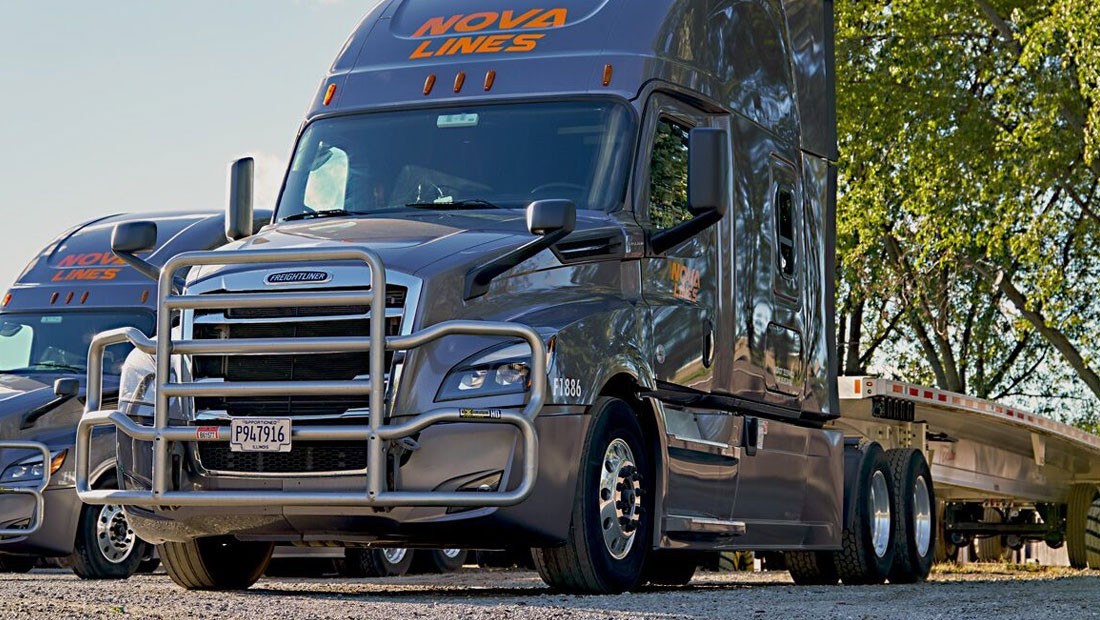What’s so special about flatbed trucking?
As the name “flatbed” suggests, the trailer has no walls or roof. It is used to carry loads that can be oversized, wide, or that require a crane to load.
A flatbed driver should expect to work with a wide variety of items including steel sheets, lumber, industrial machinery, metal pipes, plastic tubing, bricks, and spools of electrical wire. Each load can be a challenge where the driver has to make their best judgment on how to properly load and secure it.
Loading
A significant difference in loading a flatbed compared to a traditional van load is the driver’s input. The driver can be expected to look over the loading process to make sure the cargo is positioned and balanced correctly. Any mistakes can result in a poor handling trailer or even worse a shifted load.
Securement
Since a flatbed trailer has no walls, the driver is expected to make sure the cargo is secured correctly. Depending on the item, the driver must decide between chains or straps, and how many depending on the weight. There are specific techniques on how to attach the securement tools to the flatbed, and how to wrap them around the load. Some loads may require the driver to build a bulkhead to help movement.
The most significant consequence is a shifted load. Not only there is a chance for a claim for ruined cargo, but there is also a high risk of injury or death to people in traffic around the flatbed.
Tarping
Since a flatbed trailer has no roof, the driver may have to take extra steps in securement per shipper’s request. They’ll need to tarp the load and strap it down to make sure the weather will not ruin the cargo, or if the shipper desires some privacy. When not in use, the tarps have to be appropriately secured to the flatbed as well.
Care has to be taken to make sure the tarps are strapped down properly, as it carries a safety risk if it were to go loose. Imagine a large tarp covering up traffic behind you? That’s a scary thought.
Why should I get into Flatbed Trucking?
Flatbed trucking may seem like loads of work. Does this mean a flatbed driver should expect more pay? Yes! All of the extra work does pay off, and you can find yourself with 10 to 15 thousand more compared to a dry van driver.
Ultimately one of the best rewards for being a flatbed driver is the knowledge that you have the skill and fortitude to be able to secure and transport a whole variety of valuable cargo that ordinary truck drivers never encounter.
How can I get a flatbed trucking job?
Do you have at least two years of experience driving over the road? Great!
Nova Lines is willing to allow any qualified driver to enter our Flatbed Training Course. You’ll be on the road for a couple of weeks with an experienced flatbed driver. You’ll learn the ins and outs of loading, securing and tarping and all while getting paid.
So if you’re interested in making the switch from a dry van driver into a flatbed driver, reach out to Nova Lines.
